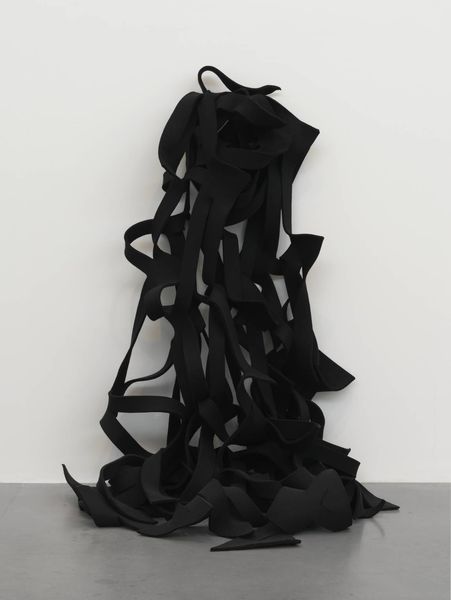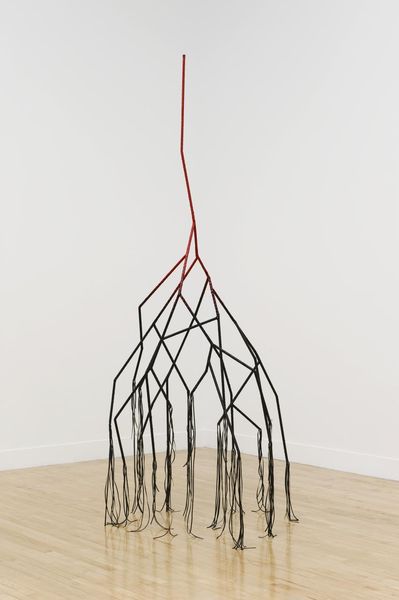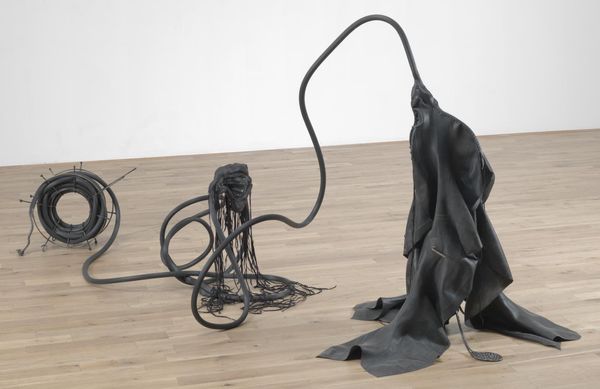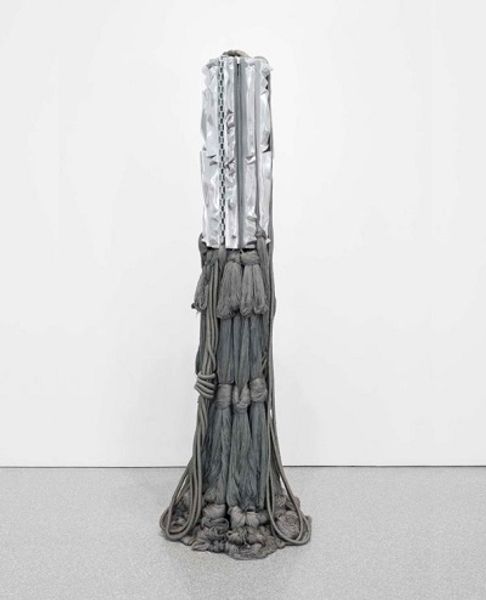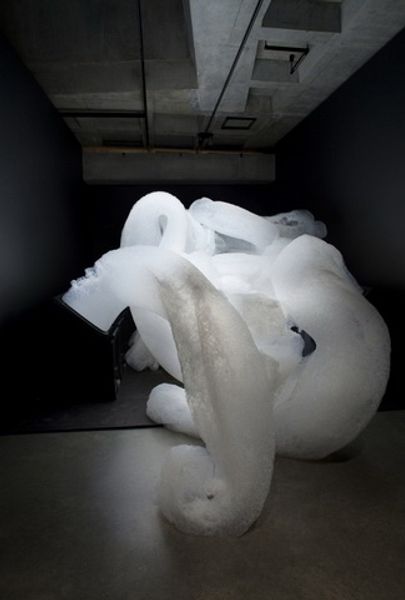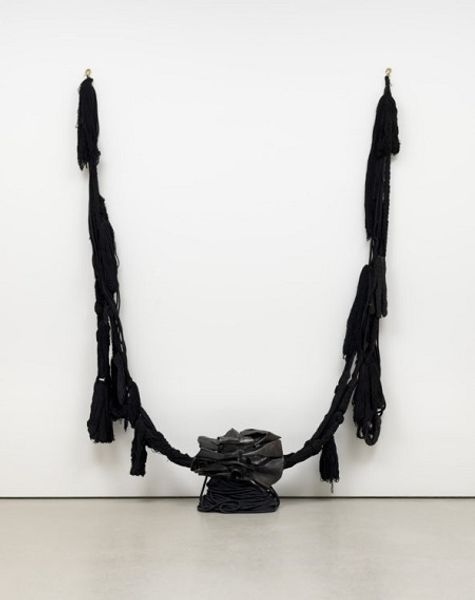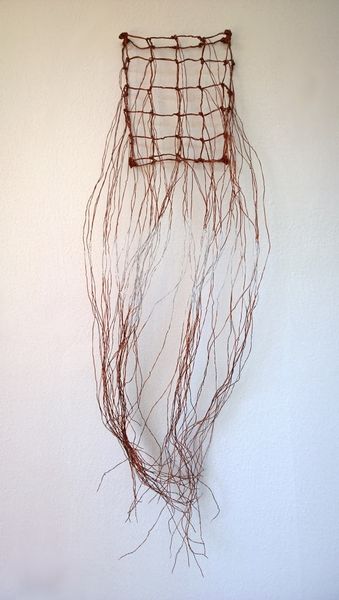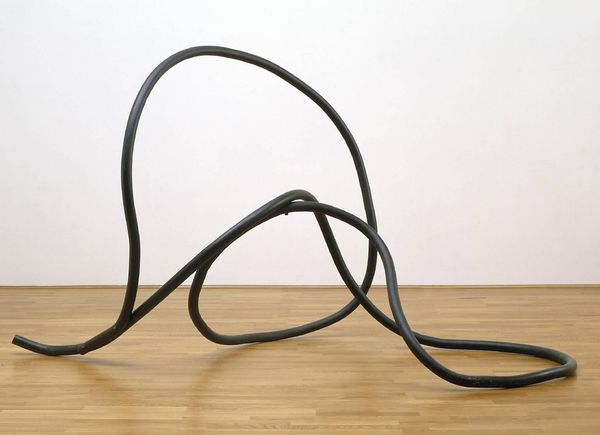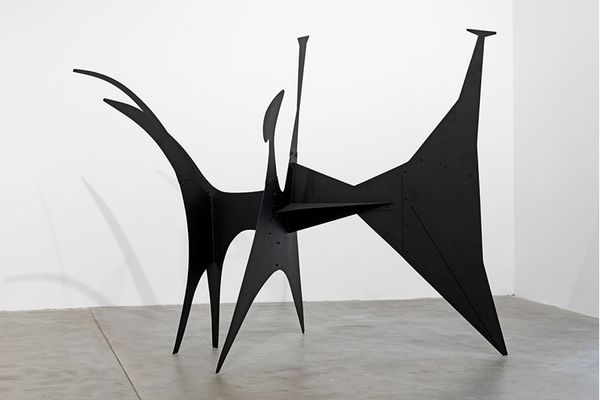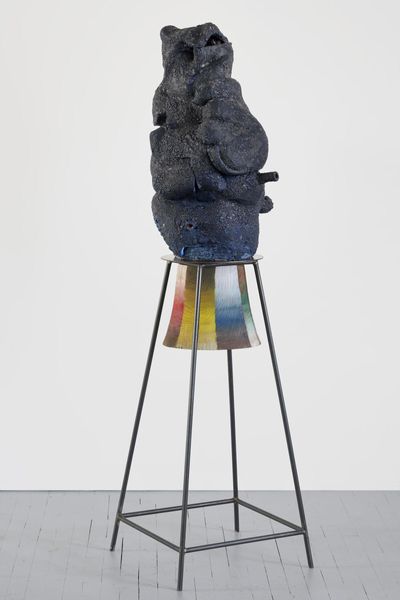
mixed-media, sculpture, installation-art
#
mixed-media
#
sculpture
#
sculpture
#
installation-art
#
abstraction
#
line
Copyright: Matsutani,Fair Use
Editor: This mixed-media piece, "Superposition 92-2," was created by Matsutani in 1992. I am struck by its monochrome palette and the contrast between the flat charcoal background and the three-dimensional, almost violently tangled, sculptural element. It feels incredibly raw and emotionally charged. How do you interpret this work? Curator: That visceral response is precisely where I want to start. What social and political turbulence might have informed this period of Matsutani's work? Consider the "superposition" itself - a scientific term suggesting the co-existence of multiple possibilities. Can we connect this to the sociopolitical unrest after WWII, and how that unease influenced a generation of artists grappling with fractured identities? The circle feels crucial; is it containment, or a portal? Editor: I hadn’t considered it in that context. The idea of 'containment' resonates; the circle feels restrictive, like it's trying to hold back the chaos. But maybe the dripping lines suggest an unavoidable release? Curator: Exactly! Think about the artist's identity – being Japanese, working through post-war anxiety and traditional expectations. This contrast may reflect personal anxieties. The dripping element makes me think of weeping or a draining away of vitality. The monochrome amplifies these feelings of desolation. Editor: So, it’s not just about formal qualities but a visual representation of grappling with societal pressures and personal anxieties in a changing world? Curator: Precisely. What does abstraction offer artists when confronting complex and often unspeakable cultural experiences, things like shame, anger, or loss of belonging? The artist doesn't tell us "what to feel"; he gives space for us to interpret and empathize, so that we might also reflect on identity politics within our own experiences. Editor: That makes me look at the piece in a new light, seeing beyond the surface chaos to the deeper themes of cultural and personal struggle. Curator: And perhaps understanding the political and philosophical complexities of art enhances both the art object and lived human experience.
Comments
No comments
Be the first to comment and join the conversation on the ultimate creative platform.
